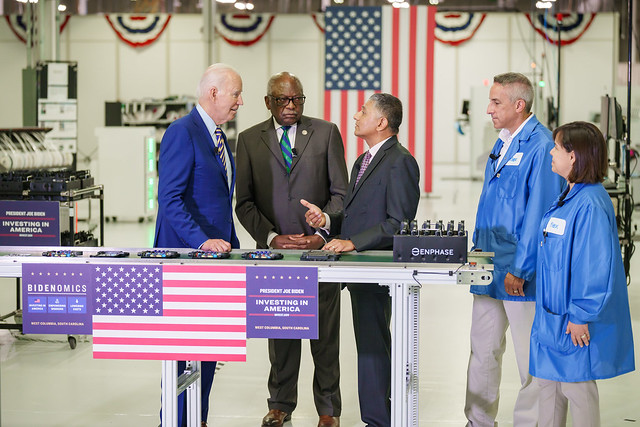Converting to an Electric Boiler Factory
For many industrial properties, converting from a large gas or oil-fired boiler to an electric one can be cost prohibitive. Breaking down and removing the existing boiler can also be cost prohibitive, especially in older, space-constrained buildings.
Electrification is particularly attractive in refining, paper, and chemicals subsectors where byproduct fuels are used to generate steam demand. These facilities would benefit from both energy savings and revenue streams from selling or disposing of the byproduct fuels.
1. High Quality Material
Electric boilers are simply pressurized vessels containing water that is heated to its saturation temperature to create steam or hot water. They are used in a variety of commercial and industrial applications around the world, and they can replace gas or oil-fired boilers to help reduce carbon emissions.
They also operate in silence, with no rumbling, hissing, or buzzing sounds common with gas boilers. And because they don’t require fuel pipes or chimneys, they can be installed anywhere. This flexibility in installation helps businesses save on construction costs. Additionally, electric boilers don’t produce any smoke or other combustion by-products that may be harmful to people or the environment.
Many industries use electrical boilers to provide high-quality steam for critical processes. They are highly efficient, providing close to 100% energy efficiency with rapid start-up and precise control of steam pressure. In pharmaceutical manufacturing, stringent sterilization requirements demand the use of specialized electric boilers that can generate high-quality steam on demand. They can also be integrated into automated systems to reduce operator errors.
Industrial electric boilers can be used in a variety of applications, including textile processing, food and beverage, rice milling, garment factory, utility or power plant, and hospitals. These boilers can be paired with a steam generator to provide redundancy in case of an outage, and they can be connected to a water treatment system for optimal performance.
2. Professional Design Engineer
A professional design engineer will make sure that a boiler is properly sized for the space it will be installed in. This is important to avoid oversized equipment that wastes energy, as well as the potential of a safety hazard. Additionally, the design engineer will electric boiler supplier make sure that the piping is properly insulated to prevent heat loss. He or she will also ensure that a circulating pump is selected for proper operation of the system.
Another important aspect of an electric boiler is that it has no on-site products of combustion, and therefore will not produce any fumes. This makes it a safe and easy-to-use heat source, especially for facilities with environmental restrictions or concerns. In addition, electric steam boilers require only a water connection and electrical hook-up, making them much easier to install than gas- or oil-fired units.
It’s common for facilities to utilize both larger fuel-fed steam boilers and smaller, electric steam boilers. When steam requirements are high, it’s a great practice to augment larger systems with the smaller, electric boilers to keep up production without needing to shut down and start up the large unit. A smaller, electric boiler can also serve as a backup for the larger unit during periods of lower steam demands. This is particularly useful for reducing downtime and keeping production up during seasonal fluctuations.
3. Professional Welding Team
Electric boilers are pressurized vessels that contain water that is heated to its saturation temperature in order to create steam or hot water. They are used in a variety of industrial applications around the world. They work using resistance elements, similar to those in a water heater, and a control system that enables the element to be energized or de-energized as needed to meet and maintain required pressures and temperatures. They use no fossil fuels, making them a great alternative for facilities that may be subject to environmental restrictions.
PK Welding offers customized industrial electric boiler solutions that are designed to meet the specific operational needs and challenges of their customers. Their engineers and technicians work closely with their clients to evaluate heating requirements, electric boiler water heater facility constraints, fuel options, and environmental considerations, delivering a tailored boiler system that minimizes operating costs and meets regulatory standards.
Distributor of new and used electric, waste oil, gas, and fire or water tube boilers for industrial applications. Also carries accessories such as pumps, blowdown separators, storage tanks and gas boosters. Services include onsite repairs and 24/7 emergency rental boiler services. Serves chemical processing, pulp and paper, utilities, food, and manufacturing industries.
4. Hydrostatic Test
Electric boilers are a more sustainable option than fossil fuel-fired furnaces because they don’t produce harmful greenhouse gases or other pollutants. They also have a smaller carbon footprint and require less space for installation. The lack of smoke emissions makes them an ideal choice for residential areas, and they’re quieter to operate.
To ensure the boiler is safe to use, it must undergo a hydrostatic test. This process involves filling the boiler with water and then raising the pressure to see if there are any leaks. It’s important to perform this test to make sure that the piping is tight enough and that the boiler can withstand its operating conditions.
Before the test, the identified test team should inspect the boiler thoroughly to make sure there are no leaks or sweating. Then, the pressure should be raised to 25% of the hydro test pressure. After that, the test should be repeated at 50% and 75% of the pressure. Once the pressure reaches its final value, the identified test team should observe the drop for 30 minutes and then inspect again to see if there are any leaks or sweating.
To conduct a hydrostatic test, all of the valves on the boiler should be closed. It’s also important to ensure that the DM water temperature is above the boiling point. Finally, the test should be conducted after any heat treatment is completed.


